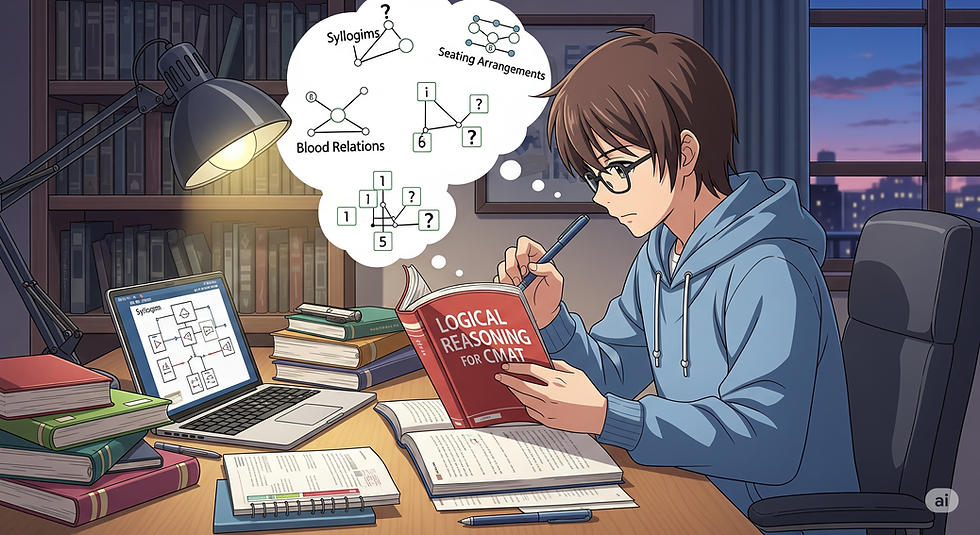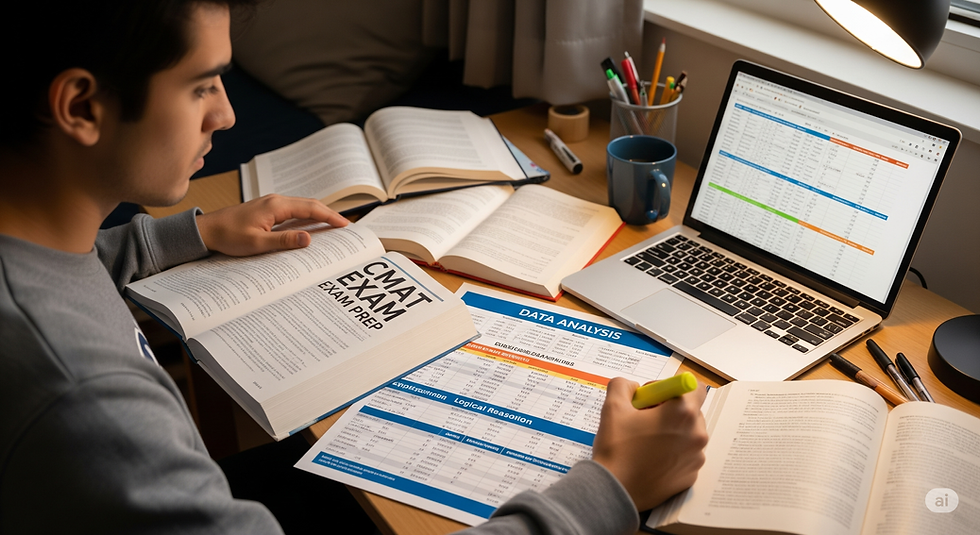Ace CMAT 2026: Supercharge Your Language Comprehension Skills!
- Aug 1
- 3 min read

Are you aiming to crack the Common Management Admission Test (CMAT) 2026 and secure a seat in a top MBA program?
If so, mastering the Language Comprehension section is absolutely crucial. This section often plays a significant role in determining your overall score and can be a game-changer in your quest for admission.
Located right here in Indore, Madhya Pradesh, we understand the aspirations of MBA aspirants like you. That's why we've put together this comprehensive guide to help you boost your language comprehension skills and confidently tackle the CMAT 2026 exam.
Why is Language Comprehension Important for CMAT?
The Language Comprehension section in CMAT assesses your ability to understand, interpret, and analyze written English. It typically includes question types like:
Reading Comprehension: Understanding passages and answering questions based on them.
Verbal Ability: Including areas like synonyms, antonyms, analogies, sentence correction, and fill-in-the-blanks.
Para Jumbles: Rearranging jumbled sentences to form a coherent paragraph.
Vocabulary: Testing your knowledge of words and their meanings.
A strong performance in this section not only contributes to your overall score but also reflects your critical thinking and analytical abilities – skills highly valued in the business world.
Powerful Strategies to Enhance Your Language Comprehension:
Read Widely and Regularly:
This is the cornerstone of improving language comprehension. Make it a habit to read diverse materials such as newspapers (especially editorials), magazines (covering business, current affairs, and literature), novels, and online articles. Pay attention to the vocabulary used, sentence structures, and the flow of ideas.
Pro Tip: While reading, actively try to summarize paragraphs in your own words. This will help you grasp the main idea and improve your retention.
Focus on Vocabulary Building:
A strong vocabulary is essential for understanding complex texts and tackling verbal ability questions.
How to Build Vocabulary:
Use a Dictionary and Thesaurus: Whenever you encounter a new word, look up its meaning and explore synonyms and antonyms.
Maintain a Vocabulary Journal: Note down new words along with their meanings and usage. Review this journal regularly.
Use Flashcards: Create flashcards for new words and test yourself.
Learn Root Words, Prefixes, and Suffixes: Understanding these can help you decipher the meaning of unfamiliar words.
Master Reading Techniques:
Effective reading techniques can save you time and improve your comprehension.
Skimming: Quickly reading through a passage to get the general idea.
Scanning: Looking for specific information within a text.
Active Reading: Engaging with the text by asking questions, making notes, and highlighting key points.
Practice Different Question Types:
Familiarize yourself with the various types of questions asked in the Language Comprehension section of CMAT. Solve practice questions from previous years' papers and mock tests.
For Reading Comprehension: Focus on understanding the main idea, identifying supporting details, inferring meanings, and recognizing the author's tone.
For Verbal Ability: Practice grammar rules, common errors, and different vocabulary-based question formats.
For Para Jumbles: Look for connecting words, pronouns, and logical flow to arrange the sentences correctly.
Improve Your Grammar:
A solid understanding of grammar is crucial for sentence correction and fill-in-the-blanks questions. Review basic grammar rules and practice identifying grammatical errors.
Regular Mock Tests and Analysis:
Take regular mock tests that simulate the CMAT exam environment. After each test, analyze your performance, identify your weak areas, and focus on improving them.
Stay Updated with Current Affairs:
Being aware of current events and social issues can help you better understand the themes and topics that might appear in reading comprehension passages.







Comments